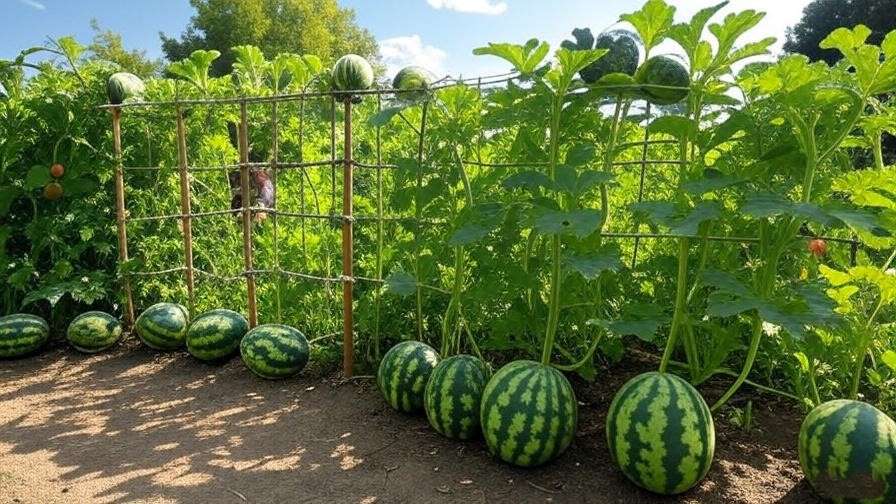Imagine biting into a sweet, juicy watermelon you grew yourself, even in the tiniest of garden spaces! 🌆 For urban gardeners or those with limited yards, Mini Love watermelon seeds offer the perfect solution to cultivate delicious, compact fruits without needing acres of land. These petite powerhouses, weighing just 3-6 pounds, deliver the same refreshing taste as their larger cousins but are tailor-made for small gardens, patios, or even containers. Whether you’re a beginner or a seasoned grower, this comprehensive guide will walk you through every step of growing Mini Love watermelons, from seed to harvest, with expert tips to ensure a bountiful, flavorful yield. Ready to transform your small space into a watermelon wonderland? Let’s dive in! 🌞
In this article, you’ll learn why Mini Love watermelons are a game-changer, their specific growing requirements, a step-by-step planting guide, care tips, troubleshooting advice, and even creative ways to enjoy your harvest. Backed by horticultural expertise and real-world gardening experience, this guide is designed to help you succeed, no matter your space or skill level.
Why Choose Mini Love Watermelon Seeds? 🌟
Mini Love watermelons are stealing the spotlight among home gardeners, and for good reason. This section explores why these seeds are a must-have for anyone looking to grow their own food in compact spaces.
Unique Features of Mini Love Watermelons
Mini Love watermelons are a hybrid variety prized for their small size, typically weighing 3-6 pounds, making them ideal for small households or families. Their crisp, red flesh bursts with sweetness, rivaling traditional watermelons, while their striped green rinds add visual appeal. Unlike larger varieties, Mini Love plants have shorter vines (6-8 feet), perfect for confined spaces. They’re also disease-resistant, particularly to powdery mildew and anthracnose, which makes them a low-maintenance choice. Their adaptability to various climates (USDA zones 4-11) ensures success for gardeners across diverse regions.
Benefits for Home Gardeners
For urban gardeners or those with balconies, Mini Love watermelons are a dream come true. 🏡 Their compact size means you can grow them in containers or small raised beds without sacrificing yield. A single plant can produce 4-6 fruits in a season, offering plenty for snacking or sharing. With a growing season of 70-80 days, they mature faster than many traditional watermelons, making them ideal for regions with shorter summers. Plus, their small size appeals to kids, making gardening a fun family activity.
Nutritional Value and Culinary Uses
Mini Love watermelons aren’t just tasty—they’re packed with nutrients. Rich in vitamins A and C, antioxidants, and hydrating electrolytes, they’re a healthy summer treat. Use them in refreshing salads, blend them into smoothies, or slice them for a quick snack. Their manageable size means less waste, perfect for single servings or small gatherings. 🍉
Expert Insight: “Mini Love watermelons are a favorite among small-space gardeners,” says Dr. Emily Carter, a horticulturist with 15 years of experience. “Their compact vines and high disease resistance make them forgiving for beginners, while their flavor satisfies even seasoned growers.”
Understanding the Growing Requirements for Mini Love Watermelon Seeds 🌞
To grow thriving Mini Love watermelons, you need to understand their specific needs. This section covers the essentials of climate, soil, and space to set you up for success.
Climate and Timing
Mini Love watermelons thrive in warm conditions, preferring temperatures between 70-85°F. They grow best in USDA zones 4-11, with planting recommended in late spring to early summer, after the last frost. For cooler climates, use row covers or black plastic mulch to warm the soil and extend the growing season. Check your local frost dates to time your planting—soil temperatures should be at least 65°F for optimal germination.
Soil Preparation
Healthy soil is the foundation of a great harvest. Mini Love watermelons prefer well-draining, loamy soil with a pH of 6.0-6.8. Before planting, test your soil using a home kit or send a sample to a local extension service. Amend poor soil with compost, aged manure, or organic matter to boost fertility. Work in 2-3 inches of compost to improve drainage and nutrient availability. Avoid heavy clay soils, which can cause root rot. 🌿
Space and Container Considerations
While Mini Love vines are shorter than traditional watermelons, they still need 6-8 feet of spread. In small gardens, use trellises to grow vines vertically, saving ground space. For container gardening, choose 15-20-gallon pots with excellent drainage. Ensure containers have sturdy trellising or support systems, as fruits can weigh down vines. Raised beds (at least 12 inches deep) are another great option for small spaces. 🪴
Tip Box: Soil and Container Checklist
- Test soil pH and aim for 6.0-6.8.
- Add 2-3 inches of compost or organic matter.
- Use 15-20-gallon containers with drainage holes.
- Install trellises or stakes for vertical growth.
Step-by-Step Guide to Planting Mini Love Watermelon Seeds 🌱
Ready to plant? Follow this detailed guide to ensure your Mini Love watermelon seeds sprout and thrive.
Sourcing Quality Seeds
Start with high-quality Mini Love watermelon seeds from reputable suppliers like Burpee, Johnny’s Selected Seeds, or local nurseries. Check for freshness—seeds should be plump, firm, and free of cracks. Avoid generic or unbranded seeds, as they may have lower germination rates. Store seeds in a cool, dry place until planting.
Starting Seeds Indoors vs. Direct Sowing
You can start Mini Love seeds indoors or sow them directly in the garden, depending on your climate. Indoors: Start seeds 4-6 weeks before the last frost in peat pots or biodegradable containers to minimize root disturbance. Plant seeds ½ inch deep in seed-starting mix, keeping them warm (75-80°F) and moist. Use a heat mat for consistent germination. Direct Sowing: In warmer climates, sow seeds directly after the last frost, ½ inch deep, 2-3 feet apart in rows or hills. Ensure soil is warm and moist but not waterlogged.
Transplanting Seedlings
If starting indoors, transplant seedlings outdoors after the last frost when they have 2-3 true leaves. Harden off seedlings by gradually exposing them to outdoor conditions over 7-10 days. Plant in prepared soil, spacing seedlings 2-3 feet apart to allow for vine growth. Water thoroughly after transplanting to settle roots.
Example: Sarah, an urban gardener in Chicago, grew her first Mini Love watermelons in containers on her balcony. “Starting seeds indoors gave me a head start,” she says. “By hardening them off and using a trellis, I harvested six sweet melons in just 75 days!”
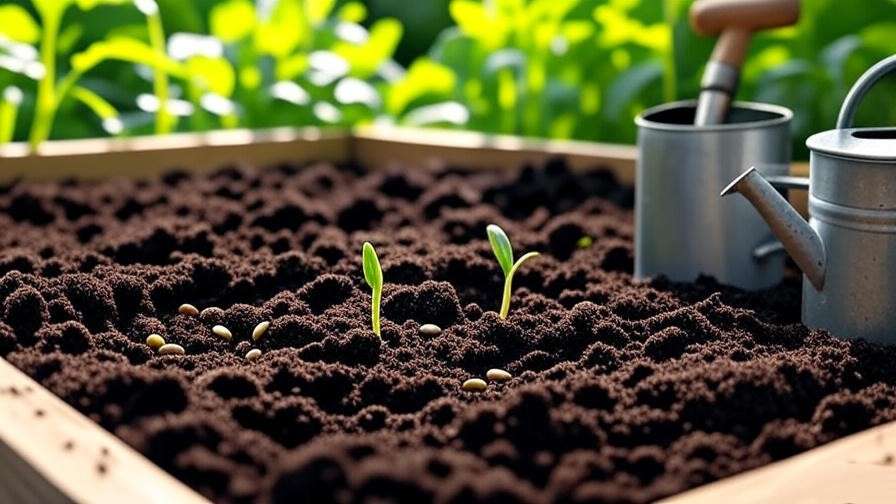
Caring for Mini Love Watermelon Plants 🌿
Proper care ensures your plants produce juicy, flavorful fruits. Here’s how to nurture your Mini Love watermelons.
Watering Needs
Mini Love watermelons need consistent moisture, about 1-2 inches of water per week, depending on weather. Water deeply at the base, avoiding foliage to prevent fungal issues. Use drip irrigation or soaker hoses for efficient watering. Reduce watering slightly once fruits set to enhance sweetness, but never let soil dry out completely. 💧
Fertilizing for Optimal Growth
Feed plants with a balanced fertilizer (e.g., 10-10-10 NPK) at planting, then switch to a phosphorus-heavy formula (5-10-10) during flowering and fruit set. Organic options like fish emulsion or compost tea work well. Apply fertilizer every 2-3 weeks, following package instructions. Watch for yellowing leaves, a sign of nitrogen deficiency, and adjust as needed.
Pest and Disease Management
Mini Love watermelons are resistant to some diseases, but pests like aphids, cucumber beetles, and spider mites can strike. Use neem oil or insecticidal soap for organic control. Companion planting with marigolds or nasturtiums can deter pests naturally. Prevent powdery mildew by ensuring good air circulation and avoiding overhead watering. Regular inspections catch issues early.
Expert Insight: Dr. James Lee, a plant pathologist, advises, “Mini Love’s disease resistance is a big advantage, but proactive care—like proper spacing and organic pest control—ensures healthy plants.”
Supporting Mini Love Watermelon Vines and Fruits 🍉
As vines grow and fruits develop, proper support is key to maximizing yield and preventing damage.
Trellising and Support Systems
Trellising saves space and improves air circulation, reducing disease risk. Build a sturdy A-frame trellis or use heavy-duty netting to support vines. As fruits grow, create slings from old t-shirts or pantyhose to cradle them, preventing strain on vines. Ensure supports are secure to handle the weight of multiple fruits.
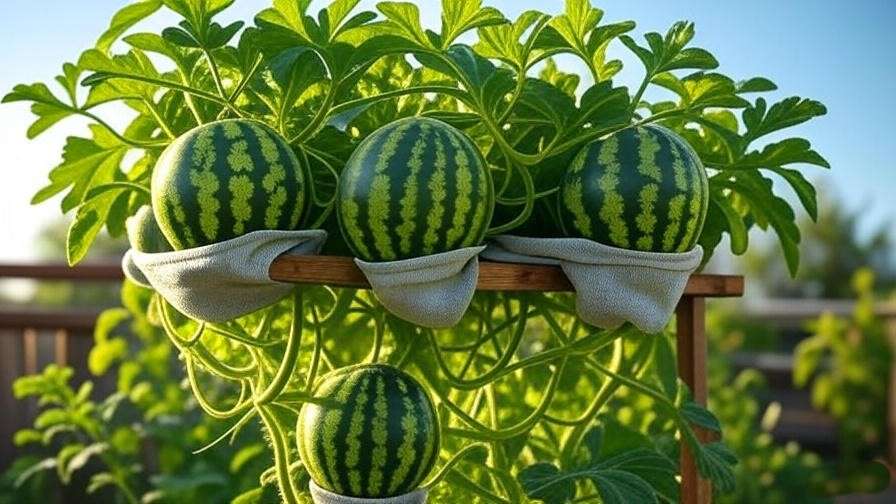
Pruning for Better Yields
Pruning directs energy to fruit production. Remove suckers (small shoots at leaf joints) and trim excessive vines, leaving 2-3 strong ones per plant. Prune in the morning with clean, sharp shears to avoid disease spread. Stop pruning once fruits are set to avoid stressing the plant.
Tip Box: Trellis Setup Guide
- Use 6-foot stakes or a metal A-frame for stability.
- Secure vines with soft ties to avoid damage.
- Check slings weekly to ensure fruits are supported.
Harvesting and Storing Mini Love Watermelons 🥳
Once your Mini Love watermelons are ready, proper harvesting and storage ensure you enjoy their sweet flavor at its peak. This section covers how to know when to pick and how to store your bounty.
When to Harvest
Mini Love watermelons typically mature in 70-80 days from planting, depending on climate and care. Look for these signs of ripeness:
- Yellowing belly: The spot where the melon rests on the ground turns creamy yellow.
- Dull rind: The rind loses its glossy shine and feels slightly rough.
- Dry tendril: The tendril closest to the fruit dries and turns brown.
To harvest, use a sharp knife or pruners to cut the stem about 1-2 inches above the fruit, avoiding damage to the vine if other fruits are still developing. Harvest in the morning when temperatures are cooler for the best flavor.
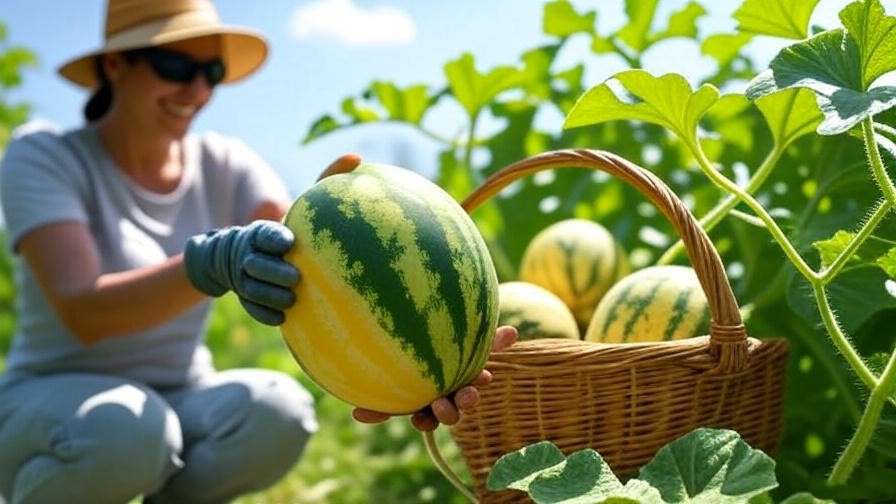
Storage Tips
Whole Mini Love watermelons store well in a cool, dry place (50-60°F) for up to 2 weeks. Avoid stacking them to prevent bruising. Once cut, wrap tightly in plastic wrap and refrigerate for up to 5 days. For longer-term use, cube the flesh and freeze it in airtight bags for smoothies or sorbets. Alternatively, juice the watermelon and store it in the fridge for 2-3 days or freeze in ice cube trays for a refreshing twist in drinks. 🍹
Example: Mark, a backyard gardener in Texas, harvested his first Mini Love crop last summer. “I waited for the yellow belly and dry tendril,” he shares. “The melons were so sweet, and freezing cubes made amazing smoothies all month!”
Troubleshooting Common Issues with Mini Love Watermelons ⚠️
Even with the best care, challenges can arise. Here’s how to tackle common problems to keep your Mini Love watermelons thriving.
Poor Fruit Set
If your plants aren’t producing fruit, the issue could be:
- Inadequate pollination: Watermelons rely on bees for pollination. If bee activity is low, try hand-pollinating by transferring pollen from male flowers (thin stem) to female flowers (small fruit at base) using a small brush or cotton swab.
- Nutrient imbalance: Too much nitrogen encourages leafy growth over fruit. Switch to a phosphorus-rich fertilizer (e.g., 5-10-10) during flowering.
- Water stress: Inconsistent watering can halt fruit development. Maintain even moisture, especially during flowering and fruit set.
Solution: Hand-pollinate in the morning, adjust fertilizer, and check irrigation systems.
Vine Wilting or Fruit Rot
Wilting vines or rotting fruits can be frustrating. Common causes include:
- Overwatering: Soggy soil leads to root rot. Ensure proper drainage and reduce watering if soil feels waterlogged.
- Fungal diseases: Fusarium wilt or anthracnose can cause wilting. Mini Love’s resistance helps, but remove affected vines and apply organic fungicides like copper-based sprays.
- Pests: Root-damaging pests like root-knot nematodes can weaken plants. Rotate crops annually to prevent buildup.
Solution: Improve drainage, treat with fungicides, and inspect roots for pests.
Small or Flavorless Fruits
If fruits are small or lack sweetness, consider:
- Overcrowding: Too many fruits per vine dilute resources. Thin to 2-3 fruits per plant for larger, sweeter melons.
- Insufficient sunlight: Plants need 6-8 hours of direct sun daily. Trim nearby foliage blocking light.
- Improper fertilization: Low potassium can reduce flavor. Use a balanced fertilizer with adequate potassium during fruit development.
Solution: Thin fruits early, ensure full sun exposure, and fertilize appropriately.
Tip Box: Quick Fixes for Common Issues
- Hand-pollinate with a small brush for better fruit set.
- Use mulch to regulate soil moisture and prevent rot.
- Test soil nutrients to address deficiencies early.
Creative Ways to Enjoy Mini Love Watermelons 🍴
Your Mini Love watermelons are more than just a snack—they’re versatile in the kitchen. Here are some creative ideas to savor your harvest.
- Mini Love Watermelon Salsa: Dice the flesh and mix with cilantro, red onion, jalapeño, and lime juice for a refreshing salsa perfect with chips or grilled fish. 🥗
- Watermelon Sorbet: Blend watermelon with a touch of honey and lemon juice, then freeze in an ice cream maker for a light dessert.
- Grilled Watermelon Slices: Lightly grill 1-inch slices for a smoky-sweet treat, ideal for summer barbecues.
- Compost or Pickle Rinds: Don’t toss the rinds! Pickle them with vinegar and spices for a tangy side, or compost them to enrich your garden soil.
Expert Insight: Chef Maria Lopez, a farm-to-table advocate, says, “Mini Love watermelons are perfect for quick, vibrant dishes. Their size makes prep easy, and their sweetness elevates both savory and sweet recipes.”
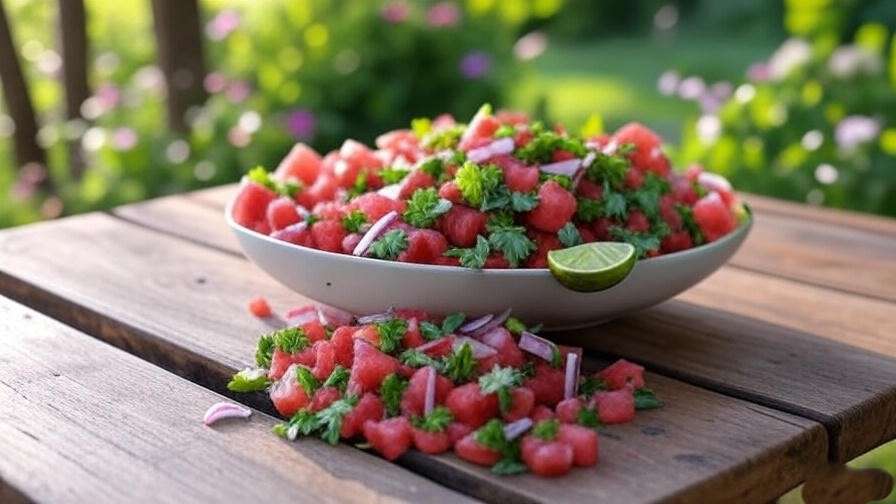
FAQs About Growing Mini Love Watermelon Seeds ❓
To address common reader questions, here are answers grounded in expertise and practical experience:
Q1: How many Mini Love watermelons can I expect per plant?
A single healthy plant typically produces 4-6 fruits, depending on care, pollination, and growing conditions. Thinning to 2-3 fruits can yield larger melons.
Q2: Can I grow Mini Love watermelons in containers year-round?
In warm climates (USDA zones 9-11), year-round growth is possible with proper care. In cooler regions, use containers indoors with grow lights during winter, but yields may be lower.
Q3: What’s the best companion planting for Mini Love watermelons?
Marigolds, nasturtiums, and herbs like basil deter pests. Avoid planting near potatoes, which can attract similar pests. Corn can provide light shade in hot climates.
Q4: How do I know if my Mini Love watermelon seeds are viable?
Test viability by soaking seeds in water for 24 hours; viable seeds sink, while non-viable ones float. Store seeds in a cool, dry place to maintain quality.
Q5: Are Mini Love watermelons suitable for hydroponic systems?
Yes, they can thrive in hydroponics with a nutrient-rich solution (EC 1.5-2.5) and strong support for vines and fruits. Ensure adequate light and pollination.
Conclusion
Growing Mini Love watermelons is a rewarding way to enjoy fresh, homegrown fruit, even in the smallest of spaces. 🍉 Their compact size, sweet flavor, and disease resistance make them a top choice for urban gardeners, beginners, and families alike. With the right care—proper soil, consistent watering, and smart trellising—you can harvest a bountiful crop in just 70-80 days. Whether you’re savoring a juicy slice, whipping up a refreshing salsa, or sharing your harvest with friends, Mini Love watermelons bring joy to any garden.
Ready to start your watermelon-growing adventure? Plant those Mini Love watermelon seeds today and watch your small space transform into a fruitful oasis. Share your tips, successes, or questions in the comments below, and explore our other plant care guides for more gardening inspiration! 🌱

